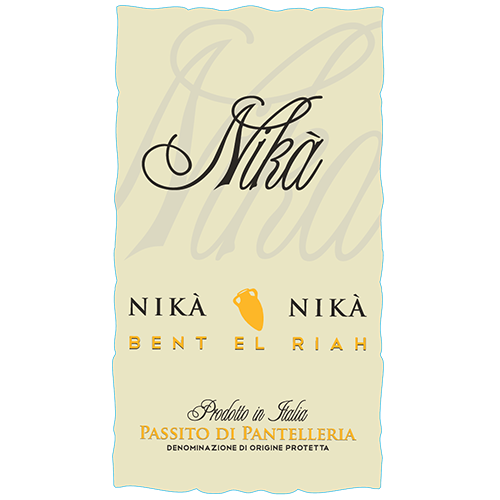
Nikà
Passito di Pantelleria DOC
This wine is made using exclusively Zibibbo grapes, a variety of Egyptian grapes, also known as Moscato d’Alessandria or Moscatellone, introduced in Sicily by the Arabs. Only on the island of Pantelleria, Zibibbo is able to achieve the best quality: large, sweet berries, very intense perfume.
Vintage Factsheets
Grown in the method known as “alberello pantesco” or “small tree,” the vines are placed into small holes to protect them from the strong, constant winds of the island, called “Bent el Rhia” or “daughter of the wind” in Arabic. The holes also help sustain the vines by collecting moisture from nighttime humidity. Volcanic, and sandy alluvial soils.
- Region
- Sicily
- Appellation
- Passito di Pantelleria DOC
- Varietal Composition
- Zibibbo
- Aging
- 13 months in stainless steel tanks.
- Alcohol
- 13%
The color is golden yellow tending to amber and the flavor is intense, with extensive notes of dates, raisins and acacia honey. The palate is sweet, soft and persistent.
